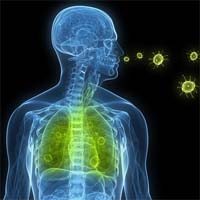Discovering the Link to Mesothelioma Growth

Italian researchers have found that a molecule called cycle adenosine monophosphate (cAMP) is involved in the growth of mesothelioma.
cAMP acts as a messenger in our cells and affects different processes in the body. When the cAMP pathway is too active, it can contribute to the growth and spread of tumors.
In this study, researchers looked at the levels of cAMP in mesothelioma tumors caused by toxic fibers like asbestos.
Mesothelioma is an aggressive cancer that grows on the lining of internal organs like the lungs and abdomen. It is caused by exposure to asbestos. Asbestos is a naturally occurring mineral that is toxic to humans.
Mesothelioma is a rare disease, so we do not know very much about how it develops or the best ways to treat it. Doctors also have a hard time figuring out how well a patient will respond to treatment. Because of this uncertainty, patients with mesothelioma usually have a poor outlook.
How cAMP Influences Tumor Growth
To better understand the role of cAMP in mesothelioma, the researchers looked at 10 mesothelioma patients who live in Biancavilla in Italy. The patients were between 50 and 93 years old.
The researchers found that five out of ten tumors had high levels of cAMP, while the other five had low levels. They also found that patients with high cAMP levels had shorter survival times compared to those with low levels. Patients with high cAMP levels survived for 7.5 months on average, while patients with low cAMP levels survived for 18 months.
This study shows that high levels of cAMP in mesothelioma tumors caused by toxic fibers are related to worse outcomes for patients. This research helps us understand the disease better and may lead to new ways to treat and improve the prognosis of mesothelioma in the future.
Source
Broggi G, Filetti V, Magro G, et al. Immunohistochemical expression of cAMP in fluoroedenite‑induced malignant pleural mesothelioma: Preliminary results. Mol Med Rep. 2023;28(1):132. doi:10.3892/mmr.2023.13019. https://pubmed.ncbi.nlm.nih.gov/37232345/





